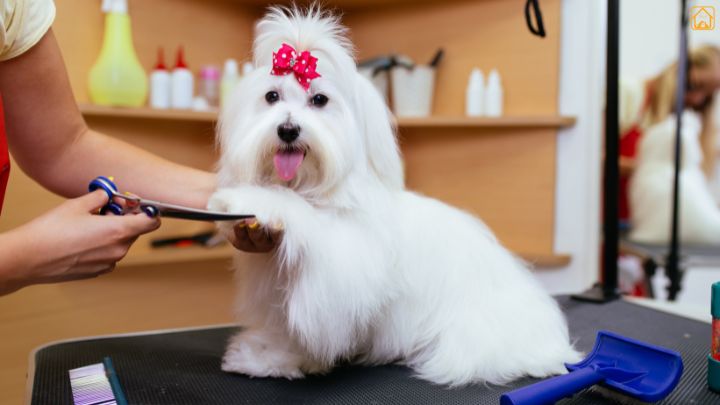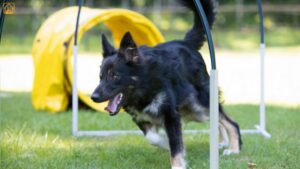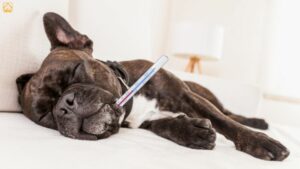Why Grooming Is Important for Your Dog’s Health and Happiness
Imagine if you never brushed your hair or cleaned your ears, pretty uncomfortable, right? Dogs might not complain out loud, but regular grooming is just as important for them. It helps prevent skin problems, reduces shedding, and keeps their coats shiny and healthy. Even more, grooming is a chance to check for hidden health issues, like bumps, ear infections, or ticks hiding in the fur.
But grooming goes beyond physical health. Many pet parents say their dogs seem calmer and happier after a good brush or bath. It’s a bonding moment, a way to show care and attention.
- Prevents matting and tangles that can cause pain or skin irritation.
- Controls shedding, keeping your house cleaner.
- Early detection of lumps, wounds, or parasites.
- Reduces odor and keeps your pup looking fresh.
- Strengthens your bond through gentle touch and routine.
Skipping grooming can lead to infections, painful mats, and even behavioural changes. So, yes, grooming really does help your dog’s health and happiness.
How Often Should You Groom Your Dog? (By Breed and Coat Type)
If you’ve ever wondered, “How often should you groom your dog?”, you’re not alone. The answer depends on their breed, coat length, and even lifestyle. Some dogs are low-maintenance, while others need a regular spa day.
Coat Types and Recommended Grooming Frequency
| Coat Type | Examples | Brushing | Bathing |
| Short-haired | Beagle, Boxer | 1-2x/week | Monthly or as needed |
| Medium-haired | Labrador, Golden Retriever | 2-3x/week | Every 4-6 weeks |
| Long-haired | Shih Tzu, Collie | Daily | Every 3-4 weeks |
| Curly/Wavy | Poodle, Bichon Frise | Every 1-2 days | Every 3-4 weeks |
| Wire-haired | Schnauzer, Terrier | 2-3x/week | Every 4-6 weeks |
Some breeds, like Yorkshire Terriers or Afghan Hounds, need daily brushing to avoid painful mats. Double-coated dogs, such as Huskies, benefit from more frequent grooming during shedding seasons. On the flip side, short-haired breeds like Dalmatians may just need a quick weekly brush.
- Puppies: Start slow, even just a few minutes at a time, to help them get used to grooming.
- Active/outdoor dogs: May need more frequent baths and brushing.
- Senior dogs: Extra care and gentle handling during grooming sessions.
And don’t forget, nail trims, ear cleaning, and dental care are part of the routine, even if your dog’s coat is easy to manage.
Essential Dog Grooming Tools and Supplies
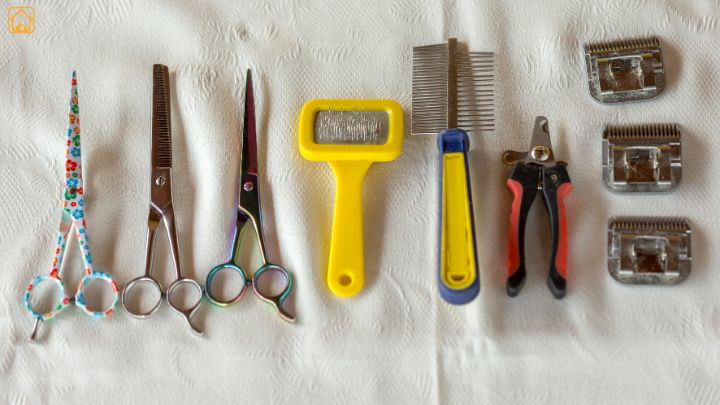
Having the right dog grooming tools makes all the difference. You don’t need a whole salon at home, but a few basic items can help you handle how to groom a dog safely and effectively. Here’s the toolkit every pet parent should have:
- Brushes and Combs: Slicker brush for long hair, bristle brush for short coats, de-shedding tool for heavy shedders, and a wide-tooth comb for tangles.
- Dog-Safe Shampoo: Formulated for dogs, not humans, look for gentle, hypoallergenic options.
- Nail Clippers or Grinders: Specially designed for dogs, with a safety guard if you’re a beginner.
- Ear Cleaning Solution: Vet-approved and made for dogs; avoid harsh chemicals.
- Dog Toothbrush & Toothpaste: Never use human toothpaste, as ingredients like xylitol are toxic to dogs.
- Towels & Blow Dryer: Absorbent towels and a pet-safe dryer (low heat) for drying after baths.
- Styptic Powder: For accidental nail nicks to stop bleeding.
- Grooming Table or Non-slip Mat: Keeps your pup steady and safe during grooming sessions.
Don’t forget treats, lots of them! Positive reinforcement turns grooming into a happy experience for everyone.
Brushing Techniques for Different Coat Types & Shedding Control
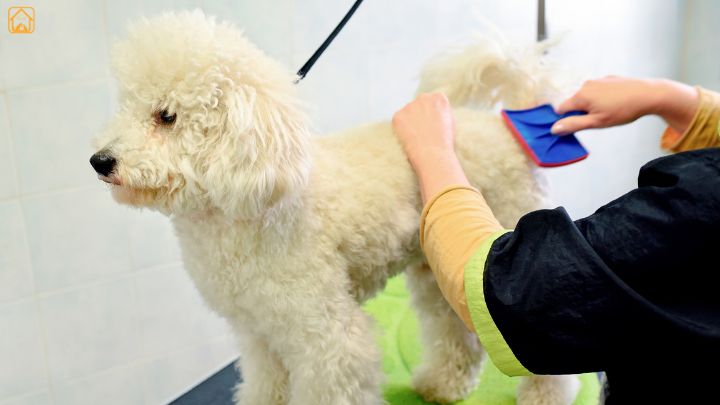
Let’s be honest: brushing is more art than science. But with the right technique, you can keep any dog’s coat tangle-free and reduce fur tumbleweeds in your home. Knowing how to groom a dog by their coat type is key.
Brushing Short-Haired Dogs
Short-haired dog grooming is usually straightforward, but don’t skip it. Use a bristle brush or grooming mitt to remove dirt and loose hair. Brush in the direction of hair growth, starting from the head and moving down the body. For breeds that shed a lot, like Labs, a de-shedding tool works wonders.
Brushing Long-Haired Dogs
Grooming long-haired dogs can feel like a full-time job! Use a slicker brush to gently work through tangles, then follow up with a wide-tooth comb. Always start at the ends and work upward to avoid pulling. Pay special attention to areas behind the ears, under the legs, and around the tail, mats love to hide there. I once spent an hour detangling my friend’s Golden Retriever after a muddy park day… patience and treats saved the day!
Brushing for Shedding Control
- Brush more often during seasonal shedding spring and fall for double-coated breeds.
- Use a de-shedding tool like a Furminator to reach undercoats.
- Frequent brushing stimulates natural oils, creating a shiny, healthy coat.
How to Handle Knots and Mats
- Never yank or cut mats out unless you know what you’re doing. Try working through gently with your fingers and a detangling spray.
- Stubborn mats? Sometimes it’s best to let a professional groomer handle them.
Regular brushing isn’t just for looks, it helps prevent skin infections and keeps your dog comfortable all year round.
Bathing and Drying Dogs Properly: Step-by-Step Guide
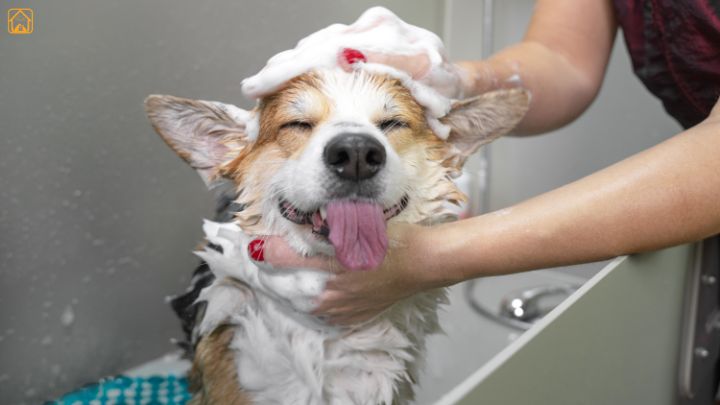
Bathing your dog doesn’t have to be chaos! With a little prep and the right steps, you can keep things calm and get your pup squeaky clean.
Bathing Steps
- Brush first to remove tangles and loose hair. Wet fur makes mats worse.
- Gather supplies: dog shampoo, towels, cup/spray nozzle, and treats.
- Use lukewarm water, not too hot or cold. Fill the tub or use a shower sprayer.
- Wet your dog thoroughly, avoiding eyes and inside the ears.
- Apply dog shampoo, lathering from neck down. Massage gently into the coat and skin.
- Rinse completely, residue can cause irritation.
- Towel dry your dog, and use a pet-safe blow dryer on low if needed (especially for long-haired breeds).
- Give a treat and lots of praise!
Extra Tips
- Use a non-slip mat to keep your pup steady.
- Protect sensitive ears, consider placing a cotton ball in each ear (just don’t forget to remove them!).
- Always check for skin issues or parasites during bath time.
- Some dogs need special shampoos for allergies or sensitive skin. Ask your vet for advice if you’re unsure.
Bathing too often can strip natural oils, so only wash as needed, or if your dog finds a mud puddle. You know how it goes!
Nail Trimming, Ear Cleaning, and Dental Care Tips
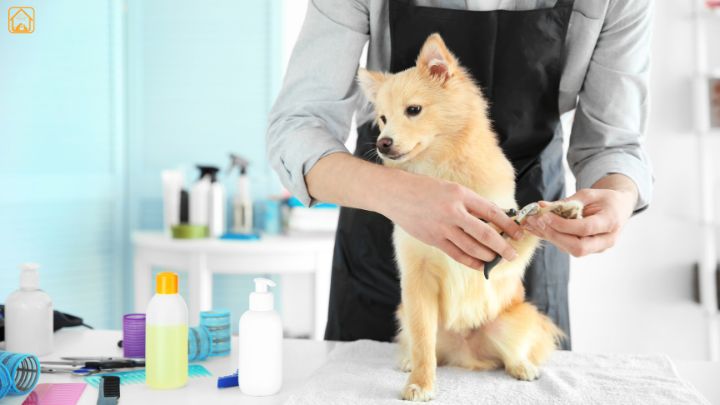
These might not be your dog’s favorite activities, but they’re vital for good health. Here’s how to groom a dog safely and make it less stressful for both of you.
Nail Trimming Tips for Dogs
- Use dog-specific nail clippers or a grinder.
- Trim just the tip, avoid the “quick,” a sensitive vein inside the nail. If the nails click on the floor, they’re too long.
- Go slow! Start with one or two nails at a time if your dog is nervous.
- If you accidentally nick the quick, use styptic powder to stop bleeding.
- Reward with treats and praise after each paw.
How to Clean a Dog’s Ears Safely
- Check ears weekly for redness, bad odor, or discharge.
- Use a vet-approved ear cleaner and cotton ball. Never insert anything deep into the ear canal, just clean the outer part.
- If your dog is prone to ear infections or has floppy ears, more frequent cleanings may help.
Dental Care Basics
- Brush teeth with dog toothpaste at least 2-3 times a week (daily is even better).
- Dental chews and toys can help, but nothing replaces brushing.
- Watch for signs of dental trouble: bad breath, bleeding gums, or trouble eating.
Honestly, the first time you try nail trimming or tooth brushing, it might feel awkward. But with patience and practice, your dog will get used to it, and their health will thank you!
Grooming Styles for Different Dog Breeds: Long-Haired vs Short-Haired
Grooming isn’t one-size-fits-all. Different breeds need different approaches. Understanding the best grooming styles for your dog’s coat can make a huge difference in comfort and appearance.
Long-Haired Breeds
- Breeds like Shih Tzus, Collies, and Afghan Hounds need regular trimming to prevent mats.
- Layered cuts (feathering) are common, but some owners prefer a “puppy cut” for easier maintenance.
- Topknots or hair ties may be needed to keep hair out of eyes.
Short-Haired Breeds
- Beagles, Boxers, and Dalmatians require less styling, but regular brushing keeps coats shiny and reduces shedding.
- Baths and nail trims are the main focus, no elaborate haircuts needed.
Honestly, I’ve always admired the creativity of professional groomers, but even simple home grooming can look great with a little practice.
Professional Dog Grooming vs DIY: Costs, Pros & Cons (with India Cost Insights)
Should you groom your dog at home or visit a professional? Both options have their place, and your choice may depend on your dog’s needs, your budget, and your confidence level.
Professional Grooming
- Pros: Skilled with tricky cuts, handling nervous dogs, and safe mat removal. Great for show dogs or breeds needing specific styles.
- Cons: Can get pricey, costs in India range from ₹500 to ₹2,500 per session, depending on breed and services like bathing, haircuts, nail trims, etc.
DIY Grooming at Home
- Pros: Saves money in the long run, strengthens your bond, flexible timing, and can be less stressful for your dog.
- Cons: Steep learning curve for beginners, risk of mistakes (like cutting the quick), and some equipment costs upfront.
Many pet parents find a balance, handling regular brushing and baths at home, then visiting a pro every few months for trims or special care. You know what’s best for your pup and your comfort zone.
Dog Grooming Checklist & Tips for Beginners
- Brush your dog regularly based on coat type.
- Bath as needed with dog-friendly shampoo.
- Trim nails every 3-4 weeks, or when you hear clicking.
- Clean ears and check for signs of infection weekly.
- Brush teeth 2-3 times per week, minimum.
- Inspect skin for lumps, bumps, or parasites during every session.
- Use positive reinforcement, treats, praise, and patience go a long way.
- Keep all grooming tools clean and stored safely.
Start slow, especially if your dog is new to grooming. Make it a positive experience, never rush or force things. If you’re unsure about anything, ask your vet or a professional groomer for a quick demo or advice.
Conclusion
Grooming isn’t just a chore, it’s a chance to show your dog how much you care. With the right approach, a little patience, and the best dog grooming tools, you’ll keep your pup looking and feeling their best. If you ever feel unsure, reach out to your vet or a local groomer; they’re always happy to help.
